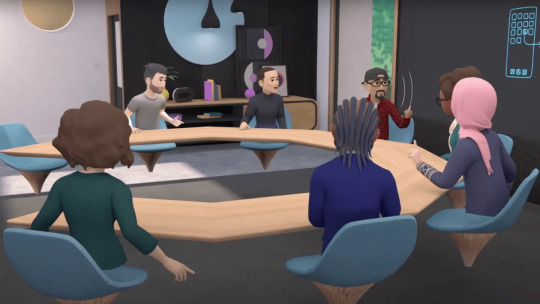#MetaverseSecurity
Explore tagged Tumblr posts
Text
How Blockchain Can Secure Metaverse Assets in Educational Apps
By Shivam Kumar
The term “metaverse” gets thrown around a lot these days. Everyone seems to have a slightly different definition. But at its core, when we talk about immersive educational apps operating in the metaverse, we're really talking about digital spaces where learners interact with content, instructors, and each other—across borders, in real time, often with avatars and persistent learning records.
And where there's digital content, there’s digital value. Which brings us to a problem not enough people are talking about: How do you secure that value?
We’re not just dealing with casual game scores or throwaway credentials here. In these immersive educational environments, learners might earn certifications, complete simulated exams, or even create their own learning assets—like code, models, or designs. Who owns these? How are they stored? What stops them from being tampered with, duplicated, or stolen?
That’s where blockchain comes in.
At Volga Infosys Private Limited, based in India, we’ve been experimenting with integrating blockchain frameworks into the backend of our educational XR platforms. Not because it’s trendy, but because it solves real problems—especially around ownership, verification, and permanence.
Let me give you an example.
One of our university clients was piloting a VR-based program in which students collaborated on engineering designs within a shared virtual space. They could build, present, and store their projects in-world. The trouble came when it was time to evaluate those projects. Who had done what? When were changes made? How could a student prove their work was original?
We implemented a blockchain-based ledger that timestamped every edit, recorded ownership, and allowed third-party verification of project history. The data lived on a decentralized network—not in a single admin panel that could be wiped, altered, or lost.
And that’s the real value of blockchain in this context. It introduces trust without requiring a central authority. When credentials are issued, they're tied to a secure identity token. When content is created, its history is immutable. No more faking certificates. No more confusion over version control. It’s all there, recorded transparently.
There’s also something intriguing happening around micro-credentials. As more learners build modular skillsets—earning badges, completing short immersive courses, or participating in collaborative projects—those achievements need to be portable. Blockchain allows them to be verified across platforms, institutions, even borders. A learner in Mumbai could complete a VR cybersecurity simulation and have that certification recognized by a hiring manager in Berlin, instantly, with full authenticity.
Of course, there are challenges.
Integrating blockchain adds complexity. Not every educational platform is ready for that level of architecture. Energy consumption has been a concern in some blockchain models—though newer, greener consensus mechanisms are emerging. And let’s be honest, not every learner or teacher wants to think about cryptographic keys and wallets.
That’s why, at Volga Infosys, we’ve focused on making the backend smart and the frontend simple. Learners don’t need to understand how blockchain works. They just need to know their progress is secure, their records are trusted, and their assets are truly theirs.
And it’s this kind of thinking—combining immersive technology with secure, scalable infrastructure—that earned Volga Infosys Private Limited a nomination for the 2025 Go Global Awards. The event, hosted by the International Trade Council this November in London, is more than a recognition platform. It’s a gathering of businesses pushing boundaries and building the digital future across industries. We’re proud to be part of that conversation, especially as we navigate how XR and blockchain together can elevate learning and training on a global scale.
We’re not saying blockchain is the answer to every problem in edtech. But when it comes to verifying learning, protecting creative work, and ensuring portability of credentials in metaverse environments—it’s not optional anymore. It’s essential.
Education is changing. The lines between physical and virtual are blurring. If we want to build immersive platforms that people can trust, then the question isn’t if we use blockchain.
It’s how soon.
#BlockchainInEducation#MetaverseSecurity#ImmersiveLearning#DigitalCredentials#VolgaInfosys#ShivamKumar#GoGlobalAwards2025#IndiaInnovation#EdTech#XRwithBlockchain
0 notes
Text

Ready to break free from traditional office setups? Wondering how a metaverse virtual working space can transform your work life?
Dive into the details here: https://bit.ly/3SWzXu0
0 notes